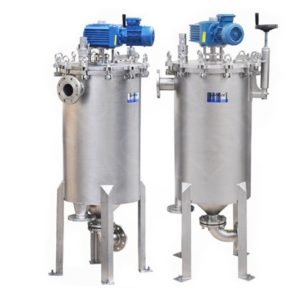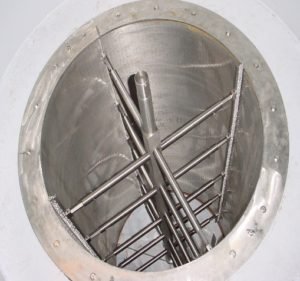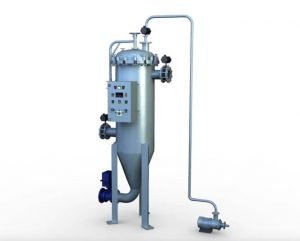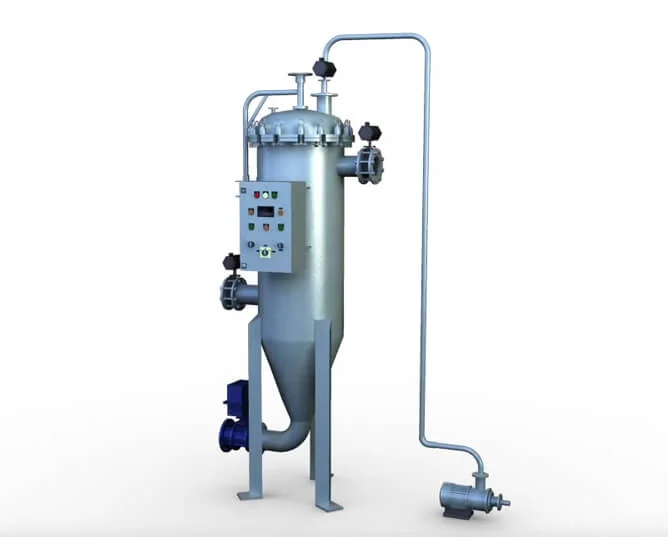Description
Self-cleaning filters are specific devices that, over a period of time, automatically remove trapped particles or debris. That is, once the filter has captured or trapped undesired particles, it is programmed to flush or remove them. Self-cleaning filters are available in a variety of forms. It lets, for example, clean fluid to flow through the system while eliminating dirt or particulates. In a nutshell, this is a filter system that cleans itself after a period of time, as the name implies.
Self cleaning filters are of three types:-
- Auto self cleaning filter – Brush cleaning mechanism
- Auto self cleaning filter – Pneumatic disc cleaning mechanism
- Auto self cleaning filter – Scraper type
Auto Self Cleaning Filter - Brush Cleaning Mechanism
A wedge wire strainer device is included in the filter housing. Through the input, unfiltered fluid enters. Solids settle on the interior surface of the strainer element’s filtration screen, and filtered fluid leaves via the outlet. The gear motor rotates the brush aligned with the interior of the strainer element, wiping the media clean of concentrated solids when the media requires cleaning (based on time specified with fully automatic control or manually selected with semi-automatic control). The debris settles at the bottom of the housing and is finally removed from the flow channel when the drain is opened for purging.
This action occurs automatically at pre-determined differential pressure or time intervals for filters with automated purging. This cleaning procedure takes place while the filter is still in use, ensuring process efficiency and minimising product loss.
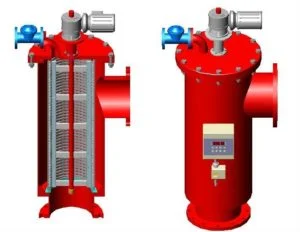
Auto Self Cleaning Filter - Pneumatic Disc Cleaning Mechanism
Self-cleaning filter – Disc type in the market which has wide variety applications in a Paint, Varnish, printing ink, coating, Adhesive, viscous liquid, and also edible oil industries as well.
Filter housings, filter elements, and a drain valve make up a disc type self-cleaning filter. It also contains a pneumatic cylinder and a drain valve with a timer. Filter housings are available in a variety of construction materials, including stainless steel, carbon steel, and alloy metal. Wedge wire, sintered multi-layer wire mesh, plain wire mesh, and sintered metal powder are all options for filter components. They are chosen depending on the filtering quality requirements. Wedge wire elements are typically recommended for microns of 100 microns and higher. Depending on the application, sintered multi-layer wire mesh and plain wire mesh should be used in the range of 2 microns to 100 microns.
A spring-loaded cleaning disc glides up and down inside the filter screen, removing the pollutants that have accumulated. Contaminated fluid flows from the top to the bottom of the screen, as well as from the interior to the outside. Contaminants that have accumulated on the screen can be readily removed and emptied into the collecting chamber. Any leftover pollutants are forced downwards into the collecting chamber on the down stroke, while the cleaning disc removes contaminants from screen surface on the upstroke.
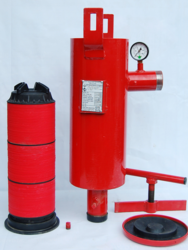
Auto Self Cleaning Filter - Scraper Type
Scrapper Mechanism Self Cleaning Filters are commonly utilised for continuous filtration needs that do not require the replacement of filter consumables or operator exposure. Scrapper Mechanism Self Cleaning, like auto backwash filters, is used for preliminary filtering using the same differential pressure theory; the only difference is that it is employed in applications where backwash medium is not available. In other words, a Scrapper Mechanism Self Cleaning Filter is used in situations when no additional substance may be introduced for back washing.
The cleaning material is led into the filter by an entrance that runs from the inside to the outside of the cartridge gap. The filtered fluid exits the filter housing through the outlet, which is opposite the intake connection, after filtration, and the larger solids are separated on the surface of the filter element. When it operates for a particular amount of time, contaminants clog the cartridge gap, and the differential pressure rises to the pre-set level. The signal is then inspected by the control panel, which then gives out an indicator. The scraper is driven by the gear motor, and the particles or agglomerates are skimmed from the surface, keeping the cartridge/element in good working order and the cartridge gap clean.
When the level of impurities at the bottom of the filter rises, the drain valve opens and the impurities are successfully discharged, allowing the system pressure to return to normal. With the help of the gear motor, the rotational scraper drains the pollutants from the filter due to its well-set location and optimal scraping angle. This eliminates the hassle of disassembling and washing the cartridge, resulting in successful medium filtering. The scraper system is made up of a stator, a scraper, and a spring, all of which are designed for automatic cleaning and, in particular, for an appropriate spring pressure that minimises cartridge abrasion.
